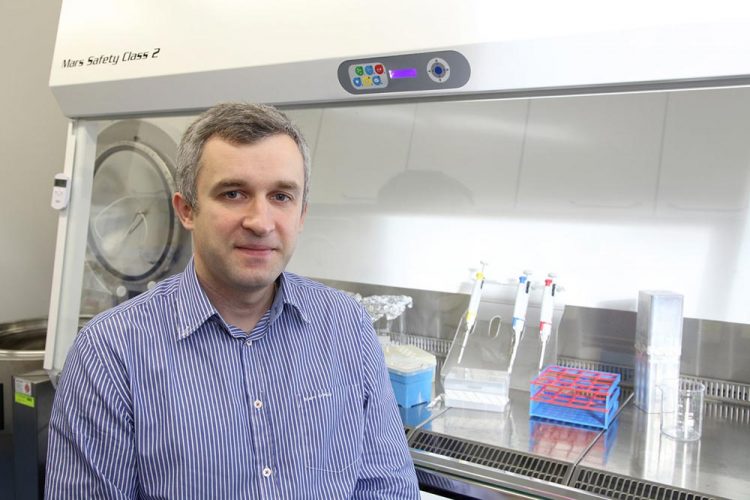Radically new

Prof. Dr. Andriy Mokhir, Chair of Organic Chemistry (Image: FAU/Georg Pöhlein)
Reactive oxygen species (ROS), more commonly known as oxygen radicals, are both a blessing and a curse: in a healthy organism they regulate cell growth, modulate inflammatory processes and help to capture and eliminate pathogens.
In high concentrations, however, ROS damage tissue, cause uncontrolled inflammation and are involved in triggering cancer and autoimmune diseases.
Paradoxically, however, amplifying oxygen radicals can indeed lead to a cure. In order to benefit from this effect in clinical applications, an innovative new medicine is being developed at FAU.
It deliberately increases the concentration of ROS in neutrophils, special cells in the congenital immune system. This can resolve inflammation or boost blood formation, thereby combating the destruction of stem cells in the bone marrow.
The project is being coordinated by Prof. Dr. Andriy Mokhir (Chair of Organic Chemistry II). Department of Medicine 3 – Rheumatology and Immunology at Universitätsklinikum Erlangen (PD Dr. Markus Hoffmann, Prof. Dr. Martin Herrmann and Prof. Dr. Georg Schett) and research institutions in Great Britain, France, Sweden, Spain and the Ukraine are also involved.
A detailed project description from the EU is available from the Cordis research platform.
Further information:
Prof. Dr. Andriy Mokhir
Phone: + 49 9131 85 65582
andriy.mokhir@fau.de
Media Contact
More Information:
http://www.fau.de/All latest news from the category: Life Sciences and Chemistry
Articles and reports from the Life Sciences and chemistry area deal with applied and basic research into modern biology, chemistry and human medicine.
Valuable information can be found on a range of life sciences fields including bacteriology, biochemistry, bionics, bioinformatics, biophysics, biotechnology, genetics, geobotany, human biology, marine biology, microbiology, molecular biology, cellular biology, zoology, bioinorganic chemistry, microchemistry and environmental chemistry.
Newest articles

First-of-its-kind study uses remote sensing to monitor plastic debris in rivers and lakes
Remote sensing creates a cost-effective solution to monitoring plastic pollution. A first-of-its-kind study from researchers at the University of Minnesota Twin Cities shows how remote sensing can help monitor and…

Laser-based artificial neuron mimics nerve cell functions at lightning speed
With a processing speed a billion times faster than nature, chip-based laser neuron could help advance AI tasks such as pattern recognition and sequence prediction. Researchers have developed a laser-based…

Optimising the processing of plastic waste
Just one look in the yellow bin reveals a colourful jumble of different types of plastic. However, the purer and more uniform plastic waste is, the easier it is to…



